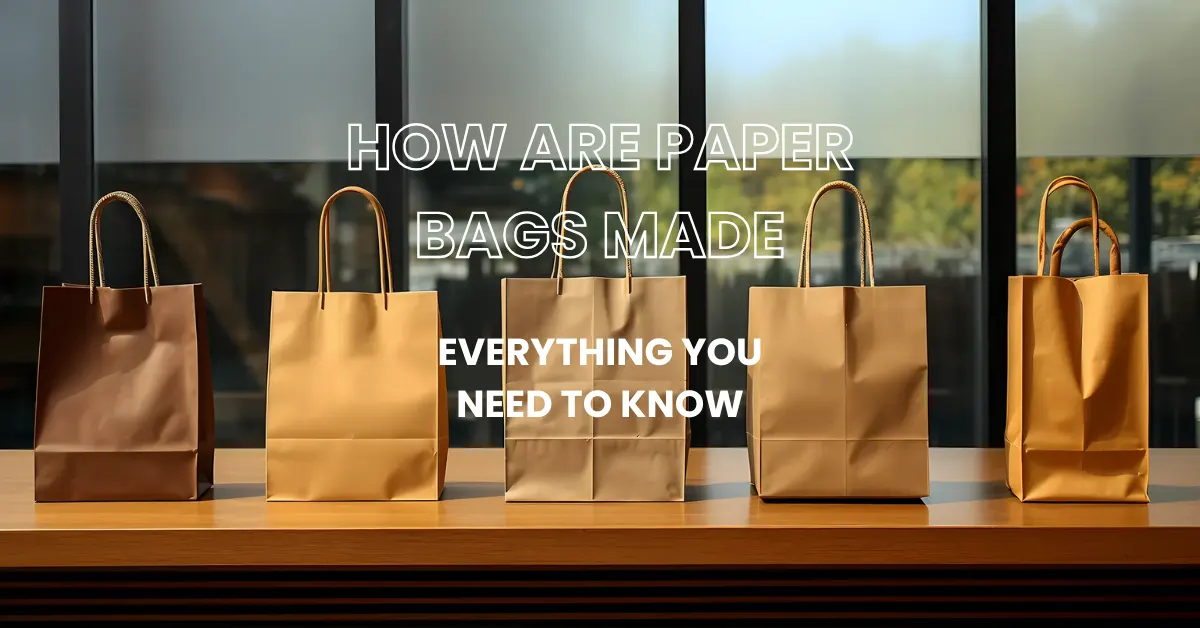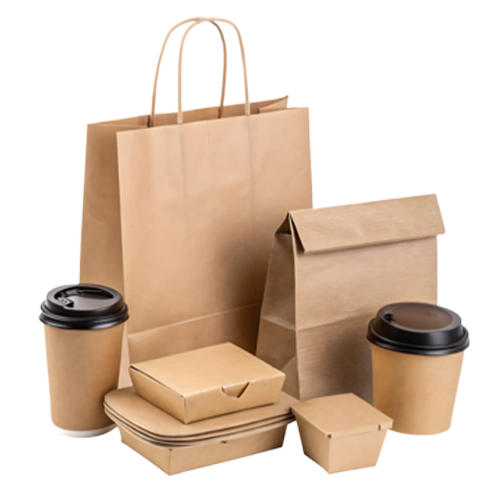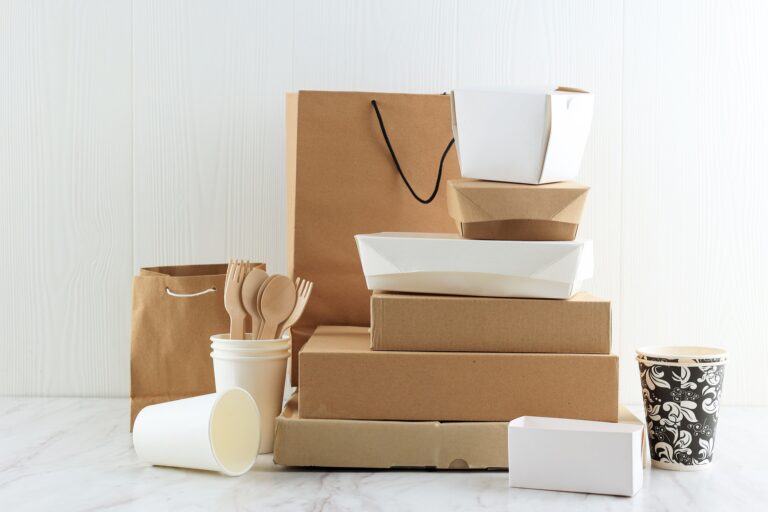In today’s world, where sustainability is more than just a trend, paper bags have become a go-to alternative to plastic. They are not only eco-friendly but also practical, stylish, and versatile. But here is the question many people overlook: how are paper bags made? What might look like a simple bag actually goes through a surprisingly detailed process that combines natural materials, advanced technology, and careful craftsmanship.
The journey of a paper bag begins long before it reaches your hands. From sourcing high-quality wood pulp to processing it into strong sheets of paper, every step plays a vital role in creating a durable and reusable product. The process does not stop there; cutting, folding, and gluing transform flat paper into a functional carrier that can hold everything from groceries to clothing. It is a fascinating blend of efficiency and design.
In this article, we will walk you through everything you need to know about how paper bags are made, breaking down the production process step by step. Whether you are an eco-conscious shopper curious about what makes paper bags sustainable or a business owner considering greener packaging options, this guide will help you see these everyday items in a whole new light.
What Are Paper Bags?
Paper bags are packaging products made primarily from kraft paper or other types of industrial-grade paper. They are designed to hold and transport a wide range of goods, serving both functional and branding purposes across industries. Paper bags are biodegradable, recyclable, and often reusable, which makes them a preferred choice in today’s sustainability-focused market. Their construction may vary from simple single-ply lunch bags to heavy-duty multi-ply shopping bags, depending on the intended use.
Properties of Paper Bags
Paper bags exhibit several key properties that influence their performance:
- Strength and Durability: Kraft paper provides high tensile strength, allowing the bags to carry heavier loads without tearing.
- Breathability: Paper bags allow a certain degree of air circulation, which makes them suitable for packaging food products like bread or fresh produce.
- Printability: The smooth surface of paper is highly receptive to inks, making it ideal for branding and promotional purposes.
- Environmental Compatibility: Being recyclable and biodegradable, paper bags align with global efforts to reduce plastic waste.
- Customizability: Different finishes, coatings, or laminations can enhance resistance to moisture and improve aesthetics without compromising eco-friendliness.
Applications of Paper Bags
Paper bags are used in diverse industries due to their adaptability and eco-friendly appeal:
- Retail and Fashion: High-quality printed paper bags are widely used in clothing stores and boutiques as a branding tool.
- Food and Beverage: Bakeries, cafés, and restaurants often rely on paper bags for takeaway packaging, especially flat or SOS (self-opening square) bags.
- Grocery and Supermarkets: Multi-ply kraft paper bags are designed to handle heavy items like canned goods, fruits, and vegetables.
- Corporate and Events: Customized paper bags are often distributed at trade shows, conferences, and product launches as part of promotional campaigns.
- E-commerce and Delivery: Reinforced paper bags are increasingly replacing plastic in packaging, offering both durability and sustainability.
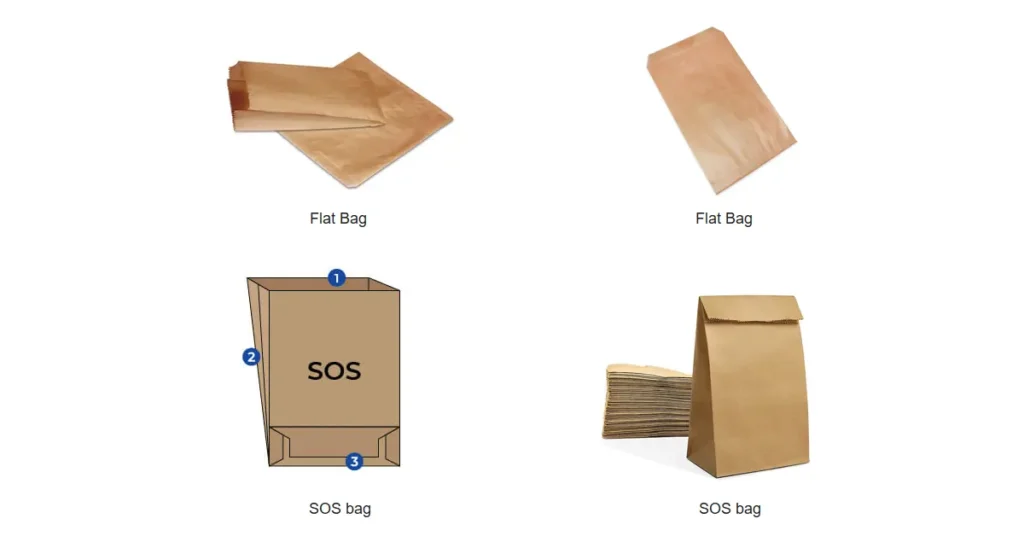
Environmental Impact of Paper Bags
Paper bags are often seen as eco-friendly, but to really understand their impact, it helps to ask: where does a paper bag come from? Most are made from trees turned into pulp or from recycled paper that has already been used once. This origin explains why they have clear environmental benefits, but also why their production can be resource-heavy. To see the full picture, we need to weigh both the advantages and the drawbacks.
Advantages of Paper Bags
- Biodegradability: Paper bags naturally break down within weeks or months, unlike plastic bags which can persist for centuries.
- Recyclability: Most paper bags can be recycled multiple times, extending the life cycle of paper fibers and reducing the need for virgin materials.
- Renewable Resource: As paper is primarily made from wood pulp, sourcing it from responsibly managed forests ensures a continuous and renewable supply.
- Lower Long-Term Waste: Properly disposed of paper bags leave minimal environmental footprint, reducing landfill accumulation.
- Consumer Preference: With growing eco-consciousness, many consumers view paper bags as a symbol of sustainable choices, boosting their market demand.
Limitations of Paper Bags
- Resource-Intensive Production: Manufacturing paper bags requires large amounts of water and energy compared to plastic.
- Deforestation Risks: Without sustainable forestry practices, high demand for virgin pulp can lead to habitat loss and reduced biodiversity.
- Transport Emissions: Paper bags are bulkier and heavier than plastic, which increases transportation-related carbon emissions.
- Durability Concerns: While strong, paper bags are less resistant to moisture and tearing than plastic, limiting their reuse in some cases.
- Lifecycle Impact: A paper bag may need to be reused several times to offset the environmental footprint of its initial production.
Material Selection: A Comparison of Papers with Different Functions
The performance and sustainability of a paper bag largely depend on the type of paper used. Manufacturers select from different grades based on strength, appearance, and intended use. Below are the primary categories of paper that go into making paper bags.
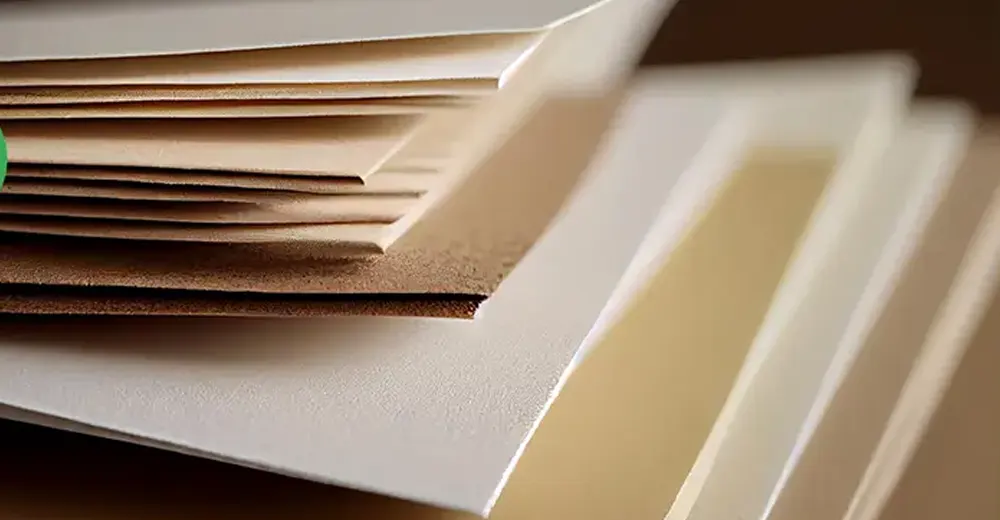
Virgin Paper
Virgin paper is produced directly from freshly pulped wood fibers. Its fibers are long, strong, and free from prior processing, making it ideal for heavy-duty bags that need maximum durability. Because it has never been recycled, virgin paper ensures consistent strength and a high-quality surface. The trade-off, however, is that it requires significant raw wood resources, making sustainable forestry practices essential when using virgin pulp.
Recycled Paper
Recycled paper is made from post-consumer or post-industrial waste paper. It reduces demand for virgin pulp and significantly lowers the environmental footprint of paper bag production. Although recycled fibers are generally shorter and weaker than virgin fibers, they work well for lightweight bags or in combination with virgin fibers. This balance helps maintain strength while supporting a circular economy.
Kraft Paper
Kraft paper is the most widely used material for paper bags, thanks to its superior strength and tear resistance. Produced using the kraft pulping process, it retains much of the wood’s natural lignin, giving it resilience and durability. Unbleached kraft paper comes in a natural brown tone, often associated with eco-friendly packaging, while bleached kraft offers a clean, white surface ideal for premium branding.
Coated Paper
Coated paper is often used when aesthetics or performance require an upgrade. A thin layer of coating such as clay, polyethylene, or biodegradable film is applied to improve moisture resistance, provide a glossy or matte finish, and enhance print quality. Coated paper bags are common in luxury retail, food packaging, and gift wrapping, where appearance is as important as functionality.
Corrugated Core Paper
For applications that require extra strength and cushioning, corrugated core paper is employed. This type of material consists of a fluted corrugated layer sandwiched between flat liners, offering rigidity and resistance to crushing. Corrugated bags are not as common in everyday retail but are increasingly used for e-commerce packaging and delivery, where they can withstand heavier loads and longer transport.
Whiteboard Paper
Whiteboard paper, also known as folding boxboard or solid bleached sulfate (SBS), is a stiff, high-quality paperboard with a smooth white surface. It is perfect for premium shopping bags, cosmetic packaging, or gift bags where vibrant printing and visual appeal are crucial. Though not as strong as kraft paper, whiteboard paper stands out for its elegant look and superior printability, making it popular in branding-focused industries.
How Are Paper Bags Made? The Full Process
1. Pulping
The foundation of paper bag production lies in the pulping process. Wood logs or recycled paper waste are chipped into small pieces before undergoing chemical or mechanical treatment. In the kraft process, sodium hydroxide and sodium sulfide break down lignin, releasing long cellulose fibers that give paper its strength. For recycled pulp, old paper is de-inked, cleaned, and screened to remove contaminants such as adhesives and plastics. The end product is a slurry of fibers suspended in water, ready for sheet formation.
2. Sheet Formation
The pulp slurry is pumped onto a moving wire mesh where water drains away, leaving a thin web of interlaced fibers. This web then passes through pressing rollers that squeeze out excess water and align the fibers, followed by heated drying cylinders that evaporate remaining moisture. This step determines the thickness, strength, and texture of the paper. Large rolls of paper, known as jumbo reels, are produced and stored for bag conversion.
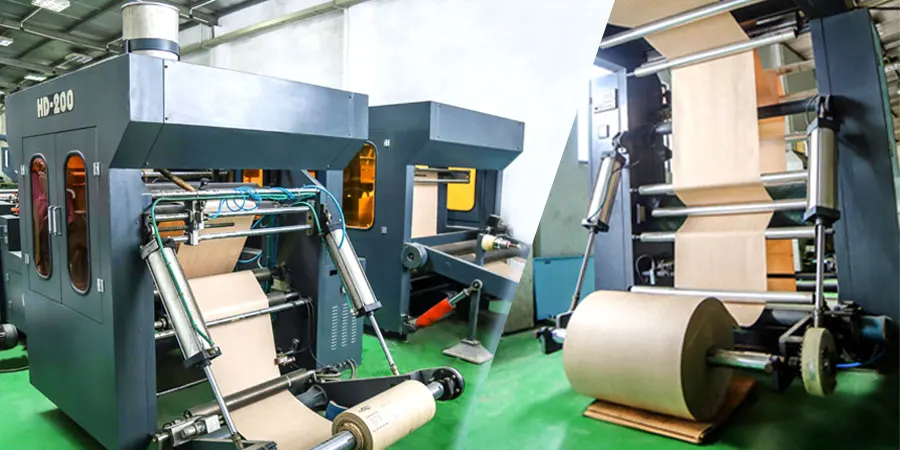
3. Paper Cutting and Preparation
The jumbo reels are cut into smaller rolls or flat sheets according to the dimensions required for bag-making. Paper thickness, expressed in grams per square meter (gsm), is carefully chosen, with lighter gsm used for bakery or food bags and heavier gsm selected for shopping or delivery bags. At this stage, additional treatments may be applied, including coatings for water resistance, laminations for strength, or special finishes for luxury appeal.
4. Printing and Branding
Before folding begins, the paper is often printed with branding elements. Flexographic printing is ideal for large runs with simple designs, while offset printing is preferred for high-quality, detailed graphics. Water-based and soy-based inks are widely used for sustainability. This step transforms a plain sheet into a marketing tool, carrying logos, colors, and promotional messages that elevate the bag’s value beyond its utility.
5. Bag Formation (Folding and Gluing)
Bag formation is where flat paper becomes three-dimensional. High-speed bag-making machines fold the paper into different structures depending on the design. Flat bags are formed by folding and gluing along the sides, making them ideal for lightweight uses such as bakery goods. Self-opening square (SOS) bags involve a more complex process, where the sides are gusseted, the base is folded into a rectangular shape, and adhesives are applied at multiple points to ensure durability. Precision in this step is crucial because misaligned folds or weak gluing can compromise the bag’ s strength.
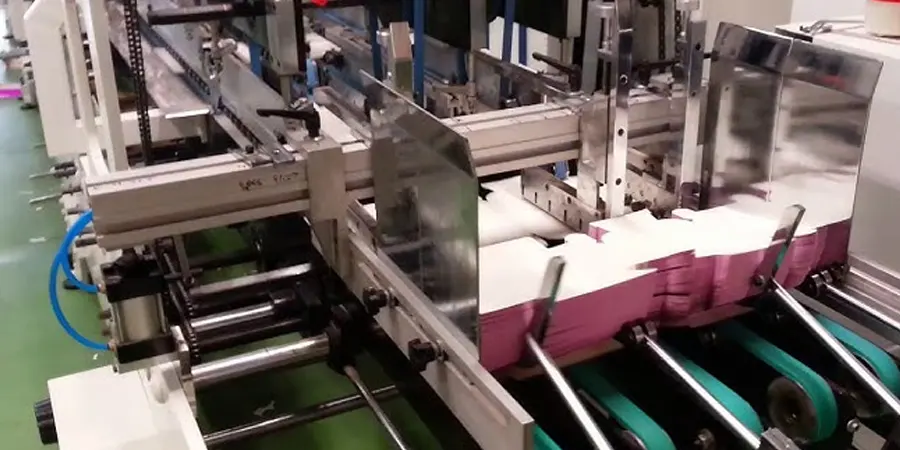
6. Bottom Sealing and Reinforcement
The bottom of a paper bag carries most of the load, making reinforcement essential. Multiple overlapping paper flaps are glued together to form a strong base. For heavier-use bags, manufacturers may add cardboard or paperboard inserts that provide extra rigidity. Reinforcement patches are often applied at stress points, such as where handles are attached. This step ensures that the bag can reliably carry heavy items without tearing or collapsing.
7. Handle Attachment
Handles enhance both functionality and user experience. Twisted paper cords are common for grocery and retail bags, offering strength and recyclability. Flat paper handles provide comfort and are easier to produce at scale. Luxury bags may feature rope or ribbon handles, sometimes inserted through punched holes and reinforced with metal eyelets. Handle application requires strong adhesive and precision placement, as weak bonds can cause premature failure when carrying weight.
8. Drying and Quality Inspection
After assembly, bags are passed through heated tunnels or drying systems to ensure adhesives are fully set. Rigorous quality checks follow, testing seam strength, handle durability, print accuracy, and overall structural integrity. Defective bags are rejected and recycled into the production process, ensuring minimal waste. Quality control at this stage safeguards both brand reputation and consumer trust.
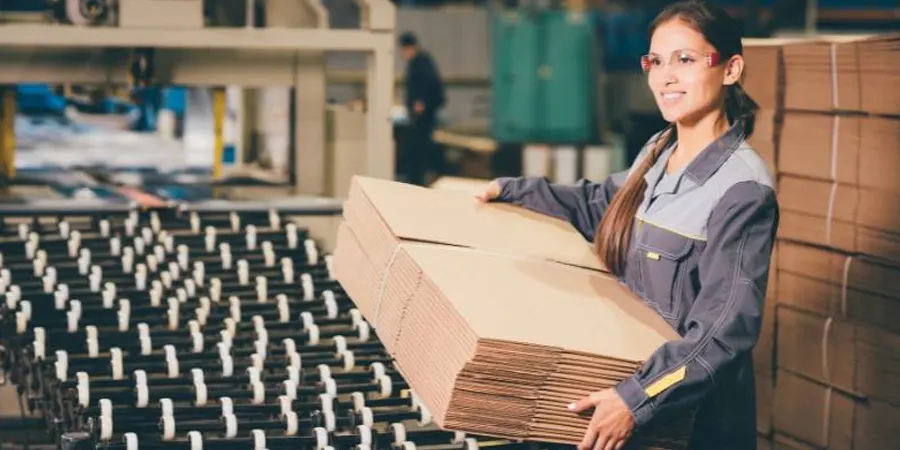
9. Bundling and Packaging
The final stage involves counting, stacking, and bundling the bags into manageable batches for transport. Depending on the client’s needs, bags may undergo additional finishing touches such as embossing, foil stamping, or spot UV printing to enhance their premium appearance. Bags are then packaged for shipment to retailers, restaurants, or distributors, ready to serve both functional and marketing purposes.
Factors Consideration in Producing Paper Bags
Producing paper bags is not just about converting paper into a functional shape. Manufacturers must weigh multiple factors to ensure that each bag meets quality, performance, and environmental standards. These considerations influence everything from cost-effectiveness to consumer satisfaction.
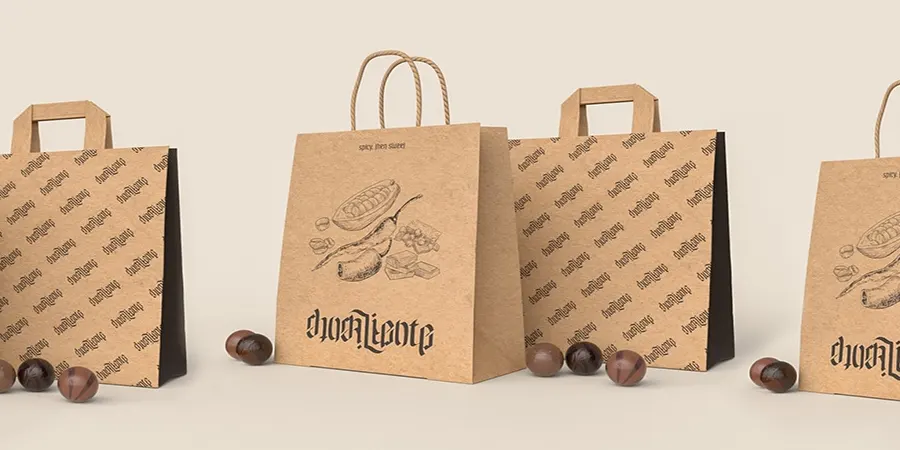
Strength and Durability
A paper bag must be strong enough to handle its intended load without tearing. The choice of paper grade, the thickness (gsm), and reinforcements such as multi-layer bases or handle patches all play a role. Grocery bags, for instance, demand sturdier kraft paper, while lightweight food bags can use thinner sheets.
Cost Efficiency
Cost is always a deciding factor. Virgin paper offers superior strength but is more expensive, while recycled paper lowers expenses but may not match the same durability. Beyond raw materials, factors like machinery efficiency, labor, and transport costs all shape the final price of a bag.
Design and Functionality
The bag’s shape and structure must suit its purpose. Flat bags are lightweight and cost-effective. SOS (self-opening square) bags offer capacity and stability. Corrugated bags serve heavier uses. Handle selection such as twisted, flat, rope, or die-cut also influences usability and practicality.
Environmental Standards
Sustainability has become a priority in production. Using recycled fibers, water-based inks, and biodegradable coatings reduces ecological impact. Certification systems such as FSC and PEFC verify that raw materials come from responsibly managed forests, supporting both environmental protection and consumer trust.
Supply Chain and Logistics
Compared with plastic, paper bags are bulkier and heavier, raising storage and transportation costs. Manufacturers must optimize packing methods and source materials locally when possible to cut emissions and ensure efficient distribution.
Recycling and Disposal of Paper Bags
Paper bags are recyclable, but they only return to the circular economy when handled correctly. A proper process ensures that the fibers are recovered in good condition and reused to make new paper products.
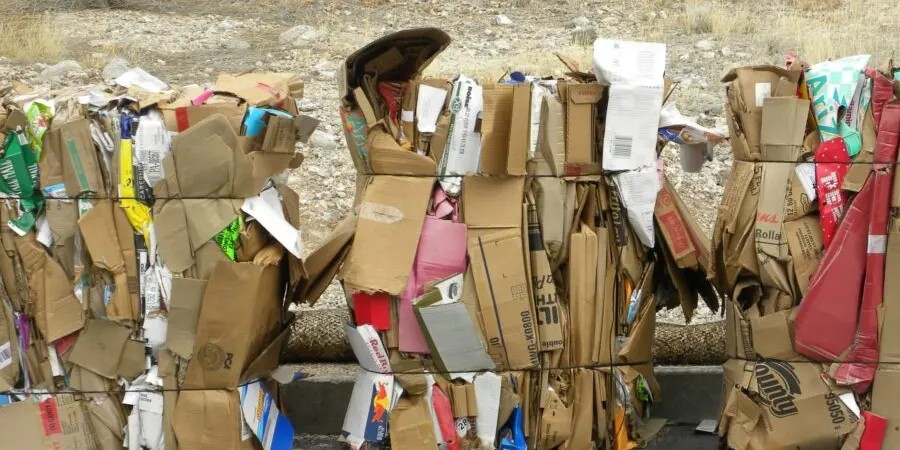
Step 1: Separate Materials
Not all paper bags are made entirely of paper. Some may include rope handles, metal rivets, or plastic coatings. These non-paper elements should be removed before recycling, otherwise they contaminate the process and reduce efficiency. A bag that is 100 percent paper can go directly into the recycling stream, while mixed-material bags may need partial separation.
Step 2: Clean the Bag
Recycling facilities accept only clean and dry paper. Bags stained with oil, food scraps, or liquids are usually rejected because contamination affects fiber quality and can damage entire batches of recyclable paper. Empty the bag, flatten it, and make sure it is free of dirt or residue. This step preserves fiber value and increases the chances of the bag being successfully recycled.
Step 3: Dispose of in the Correct Bin
After separation and cleaning, place the bag into the bin designated for paper or cardboard. From there, it is collected and transported to a paper mill where it is pulped, washed, and converted into new materials such as tissue, cardboard, or fresh paper bags. Following local recycling guidelines is important, since rules may vary by region.
When Recycling Is Not an Option
Some paper bags cannot be recycled, especially those with wax coatings, plastic laminations, or heavy food contamination. In these cases, composting is a better alternative, as untreated paper decomposes naturally and enriches soil. If composting facilities are unavailable, disposal in general waste is the final option, though it should be avoided whenever possible.

Customizing Paper Bags
Paper bags are more than just functional carriers. With the right design and finishing, they become powerful tools for branding, marketing, and enhancing the customer experience. Customization allows businesses to align packaging with their identity, while also tailoring the bag’s performance to specific needs.
Printing and Branding
One of the most common customization methods is printing. Logos, slogans, patterns, or full-color designs can be applied using flexographic, offset, or digital printing. Retailers often view bags as “mobile advertisements,” since customers carry them into public spaces. Water-based and soy-based inks are increasingly popular for combining vibrant color reproduction with eco-friendly qualities.
Size and Shape Adjustments
Paper bags come in a wide range of dimensions and structures, from flat pouches for pastries to large gusseted bags for groceries. Custom sizing ensures the bag is practical for the product it carries while minimizing wasted material. Boutique stores, for instance, often choose smaller square-bottom bags with reinforced walls to support premium items.
Handle Options
Handles are a defining feature of paper bags, and customization here directly affects both usability and style. Twisted paper cords are sturdy and recyclable, flat handles are comfortable and cost-efficient, while rope or ribbon handles provide a luxurious touch. For minimalist designs, die-cut handles eliminate the need for separate attachments.
Finishes and Coatings
Finishing treatments give bags a distinctive look and feel. Options include matte or glossy coatings, embossing for texture, foil stamping for metallic highlights, or spot UV printing for contrast. While these treatments enhance aesthetics, businesses increasingly balance them with sustainability by using biodegradable or water-based coatings instead of plastic laminations.
FAQs
How sustainable are paper bags?
Paper bags are relatively sustainable because they are recyclable, biodegradable, and sourced from renewable materials like wood pulp. Their true environmental benefit depends on responsible sourcing and repeated reuse before recycling.
What is the best paper for food packaging?
Kraft paper is widely recognized as the best choice for food packaging due to its strength and safety for direct food contact. When grease resistance is needed, a specially coated kraft paper provides additional protection.
How does glue influence the production of paper bags?
Glue is essential in holding the seams, bottoms, and handles of paper bags together. High-quality, water-based adhesives improve durability while also supporting eco-friendly production.
How long does it take for paper bags to decompose?
Most uncoated paper bags decompose naturally within a few weeks to several months depending on environmental conditions. This makes them far less harmful than plastic bags, which can last for centuries.

